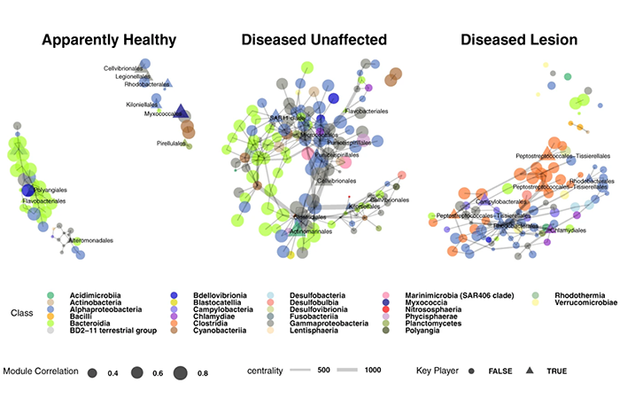Meta-analysis finds key bacteria linked to stony coral disease outbreak

The study examines bacteria networks between “apparently healthy,” “unaffected,” and “lesion” corals. Credit: doi:10.1038/s43705-023-00220-0

The study examines bacteria networks between “apparently healthy,” “unaffected,” and “lesion” corals. Credit: doi:10.1038/s43705-023-00220-0
Using a crowdsourcing approach to gather both published and unpublished data, scientists have characterized the global bacteria patterns associated with deadly stony coral tissue loss disease (SCTLD). Using meta-analysis, a study of data from other similar research to discover overall trends, scientists were able to find a key species of bacteria was linked to the disease.
According to a new study in the International Society for Microbial Ecology, researchers with the University of Miami’s Cooperative Institute for Marine and Atmospheric Studies (UM-CIMAS), NOAA’s Atlantic Oceanographic and Meteorological Laboratory (AOML), and other partners conducted a meta-analysis of microbiome (the bacteria community) datasets generated by 16 field and laboratory SCTLD studies to determine global bacteria patterns associated with SCTLD.
It is still unknown what causes SCTLD, but it is clear that it is contagious within the water column. With a 99 percent mortality rate in some coral species, this deadly disease has significantly impacted coral populations throughout Florida and the Caribbean. This study found that even in non-lesion areas of diseased corals, there is a disturbance of sorts that occurs within the coral microbiome. Scientists have found that this disturbance may be driven by the bacteria Flavobacteriales, which is highly abundant in ‘unaffected’ coral tissue.